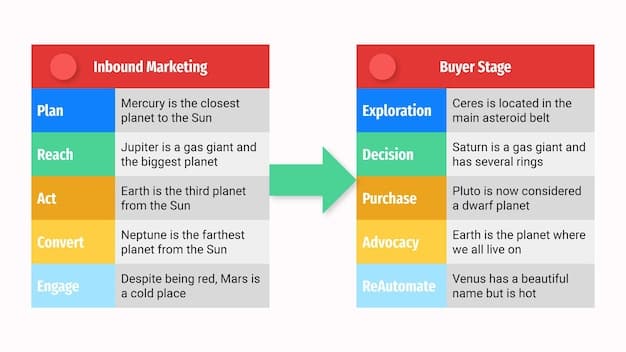Standardized Testing in the US: The Ultimate Guide to Success

The Ultimate Guide to Standardized Testing provides a comprehensive overview of standardized tests in the US, including types, preparation strategies, and their significance in college admissions and academic evaluation, helping students and parents navigate the testing process effectively.
Navigating the landscape of standardized testing in the United States can feel overwhelming. **The Ultimate Guide to Standardized Testing: Everything You Need to Know to Succeed in the US** is here to demystify the process, offering clarity and actionable strategies for students and parents alike.
Understanding Standardized Tests in the US
Standardized tests are a cornerstone of the American education system, serving as critical benchmarks for academic achievement and college readiness. These assessments are designed to evaluate students’ knowledge and skills consistently across different schools and districts.
This section will explore the common types of standardized tests, their purpose, and why they matter in the broader educational context. Understanding these elements is the first step in effectively preparing for and navigating the world of standardized testing.
Types of Standardized Tests
Standardized tests come in various forms, each serving a specific purpose. From measuring basic skills to assessing college readiness, these tests play a crucial role in determining academic pathways.
- Achievement Tests: These tests measure what a student has learned in specific subjects, such as math, reading, and science. They are often administered at the end of a school year to assess student progress.
- Aptitude Tests: Aptitude tests, like the SAT and ACT, assess a student’s potential to succeed in college. They evaluate critical thinking, problem-solving, and reasoning abilities.
- Diagnostic Tests: These tests are designed to identify specific learning strengths and weaknesses. They help educators tailor instruction to meet individual student needs.
- College Admissions Tests: Primarily the SAT and ACT, these tests are used by colleges and universities to evaluate applicants and make admissions decisions.
Why Standardized Tests Matter
The significance of standardized tests extends beyond individual student assessments. They also provide valuable data for educators and policymakers to evaluate educational programs and curricula.
Here are some key reasons why standardized tests matter:
- Accountability: Standardized tests hold schools and districts accountable for student achievement, promoting continuous improvement.
- College Admissions: These tests are a significant factor in college admissions decisions, helping institutions assess applicants from diverse backgrounds.
- Placement: Standardized tests help determine appropriate placement for students in advanced or remedial programs.
- Curriculum Evaluation: The results of these tests provide insights into the effectiveness of educational programs and curricula.
In summary, standardized tests are integral to the US education system. They provide a consistent and objective measure of student achievement, inform educational practices, and play a vital role in college admissions.
SAT vs. ACT: Choosing the Right Test
The SAT and ACT are the two primary standardized tests used for college admissions in the United States. While both tests assess similar skills, they differ in format, content, and scoring. Choosing the right test can significantly impact a student’s performance and college application outcomes.
This section will delve into the key differences between the SAT and ACT, offering insights to help students make an informed decision about which test best suits their strengths and preferences.

Key Differences Between the SAT and ACT
Understanding the differences between the SAT and ACT is essential for effective test preparation. Consider the following factors when deciding which test to take:
- Sections: The SAT consists of Evidence-Based Reading and Writing, and Math sections. The ACT includes English, Math, Reading, and Science sections, with an optional Writing section.
- Scoring: The SAT is scored out of 1600, while the ACT is scored out of 36. Each section of the ACT is scored out of 36, and the composite score is the average of these sections.
- Time per Section: The ACT is generally faster-paced, with less time per question compared to the SAT. Students who excel under pressure may prefer the ACT.
- Science Section: The ACT includes a dedicated Science section, while the SAT integrates science-related questions into the Reading and Writing sections.
Factors to Consider When Choosing a Test
Choosing between the SAT and ACT involves considering your strengths, weaknesses, and preferences. Here are some questions to ask yourself:
- Are you strong in science? If so, the ACT’s dedicated Science section may be an advantage.
- Do you prefer a faster-paced test? The ACT is generally more fast-paced than the SAT.
- Are you comfortable with geometry and trigonometry? The ACT Math section includes more advanced math concepts than the SAT.
- Have you taken practice tests for both exams? Taking practice tests can help you identify which test format you prefer.
Ultimately, the best way to determine which test is right for you is to take practice tests for both the SAT and ACT. Analyze your scores, identify areas for improvement, and choose the test that aligns with your strengths and goals.
Effective Strategies for Test Preparation
Effective test preparation is crucial for achieving a high score on standardized tests. While innate skills and knowledge play a role, strategic preparation can significantly enhance a student’s performance. This section will provide actionable strategies for test preparation, covering study habits, resources, and time management.
Whether you’re preparing for the SAT, ACT, or any other standardized test, these strategies will help you maximize your potential and approach the test with confidence.

Developing a Study Plan
Creating a structured study plan is the foundation of effective test preparation. A well-designed plan ensures that you cover all relevant topics and allocate sufficient time to each area.
Here are the key steps in developing a study plan:
- Assess Your Strengths and Weaknesses: Identify the areas where you excel and the areas where you need improvement.
- Set Realistic Goals: Establish achievable goals for each study session and for the overall test score.
- Allocate Time: Dedicate specific time slots for studying each subject, taking into account your schedule and commitments.
- Use Quality Resources: Utilize official test preparation materials, such as practice tests, study guides, and online resources.
Utilizing Practice Tests
Practice tests are an invaluable tool for test preparation. They familiarize you with the test format, content, and timing, allowing you to identify your strengths and weaknesses.
Here are some tips for effectively using practice tests:
- Take Full-Length Practice Tests: Simulate the actual test environment by taking complete practice tests under timed conditions.
- Review Your Answers: Analyze your mistakes to understand why you got them wrong and learn from them.
- Identify Patterns: Look for patterns in the types of questions you consistently miss and focus on improving those areas.
- Track Your Progress: Monitor your scores over time to see how you are improving and adjust your study plan accordingly.
By developing a structured study plan and utilizing practice tests effectively, you can significantly improve your performance on standardized tests. Remember to stay consistent, focused, and adaptable throughout your preparation journey.
Test-Taking Tips and Strategies
Beyond preparation, employing effective test-taking strategies can significantly enhance your performance on standardized tests. These strategies involve managing your time, approaching questions strategically, and minimizing errors.
This section will provide practical tips and strategies to help you navigate the test environment, maximize your score, and approach each question with confidence.
Time Management
Time management is critical during standardized tests. Running out of time can lead to rushing through questions and making careless mistakes.
Here are some time management tips:
- Pace Yourself: Allocate a specific amount of time to each section and each question.
- Use a Timer: Keep track of your time with a timer or watch.
- Skip Difficult Questions: If you get stuck on a question, skip it and come back to it later.
- Review Your Answers: If you have time left over, review your answers to catch any mistakes.
Question-Answering Strategies
Approaching questions strategically can help you increase your accuracy and efficiency.
Here are some question-answering strategies:
- Read Carefully: Read each question and all the answer choices carefully before selecting your answer.
- Eliminate Wrong Answers: Start by eliminating answer choices that you know are incorrect.
- Look for Keywords: Pay attention to keywords in the question and answer choices that can provide clues.
- Use Logic and Reasoning: Apply logic and reasoning to evaluate the answer choices and select the best one.
By mastering time management and employing effective question-answering strategies, you can approach standardized tests with confidence and maximize your potential score.
Understanding Test Scores and Their Impact
Understanding your test scores and their impact is crucial for college admissions and future academic endeavors. Test scores provide valuable information about your strengths and weaknesses, and they play a significant role in college admissions decisions.
This section will delve into the meaning of test scores, how they are used in college admissions, and how to interpret your results to inform your future academic path.
Interpreting Your Scores
Test scores are often accompanied by percentiles, which indicate how you performed relative to other test takers. Understanding these percentiles can provide valuable insights into your performance.
Here are some key points to consider when interpreting your scores:
- Percentiles: A percentile score indicates the percentage of test takers who scored lower than you. For example, if you scored in the 80th percentile, you performed better than 80% of test takers.
- Score Ranges: Understand the score ranges for each test and section. This will help you assess your performance relative to the maximum possible score.
- Subscores: Some tests provide subscores that offer more detailed insights into specific skills and areas of knowledge.
- Score Reports: Review your score reports carefully to understand your strengths and weaknesses.
How Colleges Use Test Scores
Colleges use test scores as one factor in their admissions decisions. While test scores are not the only factor, they can play a significant role in evaluating applicants from diverse backgrounds.
Here are some ways colleges use test scores:
- Academic Readiness: Test scores provide a standardized measure of academic readiness, helping colleges assess whether applicants have the skills and knowledge to succeed in college-level coursework.
- Comparison: Test scores allow colleges to compare applicants from different high schools and educational backgrounds.
- Scholarships: High test scores can increase your chances of receiving scholarships and financial aid.
- Placement: Test scores may be used to determine placement in advanced or remedial courses.
By understanding how to interpret your test scores and how colleges use them, you can gain valuable insights into your academic strengths and make informed decisions about your future educational path.
Dealing with Test Anxiety and Stress
Test anxiety and stress are common challenges that many students face when preparing for and taking standardized tests. These feelings can negatively impact performance and overall well-being. It’s important to develop strategies for managing anxiety and maintaining a positive mindset.
This section provides techniques and tips to help you cope with test anxiety, reduce stress, and approach your exams with a calm and confident attitude.
Techniques for Managing Test Anxiety
Managing test anxiety involves both mental and physical strategies. Practicing these techniques regularly can help you stay calm and focused during exams.
- Deep Breathing Exercises: Taking slow, deep breaths can help calm your nerves and reduce physical tension. Practice deep breathing exercises daily to become more comfortable with them.
- Positive Self-Talk: Replace negative thoughts with positive affirmations. Remind yourself of your strengths and preparation efforts.
- Visualization: Visualize yourself successfully completing the test. Imagine feeling calm, confident, and focused as you answer each question.
- Mindfulness Meditation: Practicing mindfulness can help you stay present and reduce racing thoughts. Focus on the present moment and let go of worries about the future or past.
Maintaining a Positive Mindset
A positive mindset is essential for managing stress and achieving your best performance on standardized tests. Cultivate a positive outlook by focusing on your strengths and celebrating your progress.
- Set Realistic Expectations: Avoid putting too much pressure on yourself. Set realistic goals and focus on making progress rather than achieving perfection.
- Celebrate Small Victories: Acknowledge and celebrate your accomplishments, no matter how small they may seem. This can help boost your confidence and motivation.
- Seek Support: Talk to friends, family, or counselors about your concerns and anxieties. Sharing your feelings can help alleviate stress and provide valuable support.
- Practice Self-Care: Take care of your physical and emotional well-being by getting enough sleep, eating healthy, and engaging in activities you enjoy.
By implementing these techniques and maintaining a positive mindset, you can effectively deal with test anxiety and stress, allowing you to perform at your best on standardized tests.
| Key Aspect | Brief Description |
|---|---|
| 📚 Test Types | Achievement, aptitude, diagnostic, and college admissions tests. |
| ⏱️ Time Mgmt | Pace yourself, skip hard questions, and review your answers. |
| 🧠 Anxiety | Use breathing exercises, positive self-talk, and mindfulness. |
| 📊 Score Impact | Colleges use scores for admissions, scholarships, and placement. |
Frequently Asked Questions
▼
Standardized tests are used to evaluate students’ knowledge and skills consistently across different schools and districts. They are crucial for college admissions, academic evaluation, and curriculum assessment.
▼
Consider your strengths and weaknesses. The ACT has a science section, while the SAT focuses more on reading and writing. Take practice tests for both to see which aligns better with your abilities.
▼
Develop a study plan, use quality resources, take full-length practice tests, and review your answers to identify areas for improvement. Consistency is key for successful test preparation.
▼
Practice deep breathing exercises, use positive self-talk, visualize success, and seek support from friends or counselors. A calm and confident mindset is crucial for performing well.
▼
Colleges use test scores to assess academic readiness, compare applicants, and determine eligibility for scholarships and financial aid. Scores are one factor among many in the admissions process.
Conclusion
Navigating the world of standardized testing can be complex, but with the right knowledge and preparation, you can approach these exams with confidence. By understanding the types of tests, developing effective study strategies, and managing test anxiety, you can maximize your potential and achieve your academic goals. Remember, standardized tests are just one step on your educational journey, and a well-rounded approach to learning and personal growth will ultimately lead you to success.





